Scientific name
Ischiodon scutellaris (Fabricius)
Taxonomic position
Diptera: Syrphidae: Syrphinae: Syrphini
Diagnosis
Images
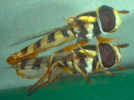
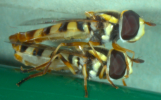 Mating pair Mating pair
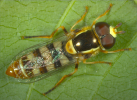
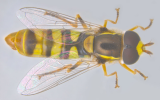 Adult male Adult male
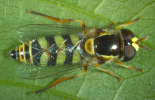

 Adult female Adult female

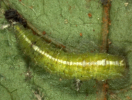 Larva Larva

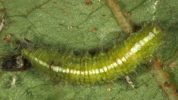 Larva feeding on Aphis craccivora Koch Larva feeding on Aphis craccivora Koch
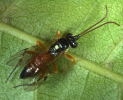 Diplazon sp. nr. orientalis (Ichneumonidae), a larval parasitoid of I. scutellaris Diplazon sp. nr. orientalis (Ichneumonidae), a larval parasitoid of I. scutellaris
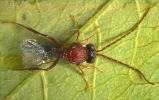 Callaspidia notata (Boyer de Fonscolombe) (Figitidae), a larval-pupal parasitoid Callaspidia notata (Boyer de Fonscolombe) (Figitidae), a larval-pupal parasitoid
Distribution
Widely distributed almost throughout India. Sri Lanka. Pakistan. Nepal. Afghanistan. Myanmar.
Prey / Associated habitat
Feeds on a variety of aphids (Hemiptera: Aphididae) such as Acyrthosiphon pisum, A. spiraecola, A. craccivora, A. fabae, A. gossypii, A. nerii, A. punicae, A. rhoicola, A. umbrella, Brevicoryne brassicae, Greenidea artocarpi, Hysteroneura setariae, Lipaphis erysimi, Melanaphis
sacchari, Myzus persicae, Pentalonia nigronervosa, Rhopalosiphum maidis, Sarucallis kahawaluokalani, Sitobion avenae, S. rosaeiformis, Therioaphis trifolii, Toxoptera aurantii, T. citricida, T. odinae, Uroleucon compositae and U. sonchi (Ghorpade, 1981). It has been recorded on Trialeurodes ricini (Misra) (Aleurodidae).
Associated with aphids on redgram, cabbage, chrysanthemum,
cotton, crucifers, mustard, radish, redgram, rose, sorghum, watermelon, wheat and various other host plants (Ghorpade, 1981). Singh & Mishra (1988) studied its development on R. maidis. Joshi et al. (1999) studied its predatory potential. Joshi et al. (1998) standardized a mass culturing technique for I. scutellaris. In India, attempts have been made at using augmentative releases of I. scutellaris for the control of aphids on mustard, but the results were not promising.
References
- Brunetti, E. 1923. The Fauna of British India, including Ceylon and Burma. Diptera. Volume 3. Pipunculidae, Syrphidae, Conopidae, Oestridae. xii+424 p. Taylor & Francis, London.
- Ghorpade, K. 1981. Insect prey of Syrphidae (Diptera) from India and neighbouring countries: a review and bibliography. Tropical Pest Management, 27: 62-82.
- Ghorpade, K. 1994. Diagnostic keys to new and known genera and species of Indian subcontinent Syrphini (Diptera: Syrphidae). Colemania 3: 1-15.
- Joshi, S., Ballal, C.R. & Rao, N.S. 1998. An efficient and simple mass culturing technique for Ischiodon scutellaris (Fabricius), an aphidophagous syrphid. Indian Journal of Plant Protection, 26: 56-61.
- Joshi, S., Ballal, C.R. & Rao, N.S. 1999. Evaluation of potential of syrphid predators, Ischiodon scutellaris (Fabricius) and Paragus serratus (Fabricius) (Diptera: Syrphidae).
Journal of Aphidology, 13: 9-16.
- Singh, R. & Mishra, S. 1988. Development of a syrphid fly, Ischiodon scutellaris (Fabricius) on Rhopalosiphum maidis (Fitch). Journal of Aphidology, 2: 28-34.
|